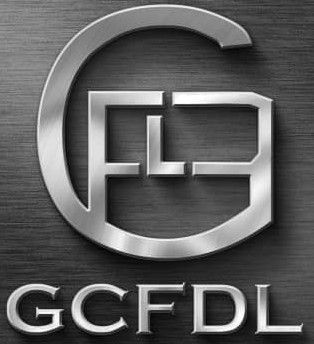Standby Letter of Credit (SBLC) Monetization
What is Standby Letter of Credit (SBLC) Monetization?

Standby Letter of Credit (SBLC) monetization involves converting a Standby Letter of Credit (SBLC) into cash or a non-recourse loan. Essentially, it allows the holder of the Standby Letter of Credit (SBLC) to access funds by leveraging the Standby Letter of Credit (SBLC) Monetization as collateral. This can be particularly useful for businesses needing immediate liquidity without selling off assets, but it also carries some risks. If the business owner fails to fulfill its obligation under the underlying contract that the SBLC was intended to secure, the lender may be able to draw on the SBLC to recoup the loan. Additionally, monetizing an SBLC requires the borrower to pay fees to the bank and the lender, which can add to the cost of borrowing.
What is a Standby Letter of Credit (SBLC)?
A Standby Letter of Credit (SBLC) is a guarantee of payment issued by a bank on behalf of a client that is used as payment of last resort. It serves as a guarantee of payment to a beneficiary if the client fails to fulfill their contractual obligations. SBLC acts as a safety net, ensuring that the beneficiary receives payment even if the client defaults. The bank steps in to cover the payment, providing a layer of security in international trade and high-value transactions.
A Standby Letter of Credit (SBLC) is commonly used by businesses to secure a contract. The “standby” nature of the agreement means that the bank is only obligated to make payments in a worst-case scenario.
While an SBLC ensures payment to the seller, it’s important to adhere to the terms of the agreement precisely. For instance, any delays in shipping or errors in the company’s name can result in the bank refusing to make the payment.
Real-world example of how a Standby Letter of Credit (SBLC) works:
Imagine an edible dye manufacturer ships a large order of dye to a soft drink company. The soft drink company has a financial SBLC in place to guarantee payment. If the soft drink company fails to pay for the shipment, the issuing bank steps in and pays the manufacturer for the dye. Later, the soft drink company must repay the bank the full amount plus any interest.
This ensures the manufacturer gets paid even if the buyer defaults, making it a valuable tool in international trade.
Types of Standby Letter of Credit (SBLC):
A “Performance Standby” supports an obligation to perform tasks other than paying money. It covers losses resulting from the applicant’s failure to complete the underlying transactions.
An “Advance Payment Standby” supports an obligation to account for an advance payment made by the beneficiary to the applicant.
A “Bid Bond/Tender Bond Standby” supports an obligation of the applicant to sign a contract if they win a bid.
A “Counter Standby” supports the issuance of a separate standby or other undertaking by the beneficiary of the counter standby.
A “Financial Standby” supports an obligation to pay money, including any instrument showing an obligation to repay borrowed money.
A “Direct Pay” Standby supports payment when due of an underlying payment obligation, typically in connection with a financial standby, without regard to a default.
An “Insurance Standby” supports an insurance or reinsurance obligation of the applicant.
A “Commercial Standby” supports the obligations of an applicant to pay for goods or services in the event of non-payment by other methods.
Differences Between Standby Letter of Credit (SBLC) and Bank Guarantee (BG)
Scope of Usage:
SBLC: Typically used in long-term contracts for payment security based on contract terms.
BG: Used in both long-term and short-term transactions, such as real estate and construction projects.
Scope of Protection:
SBLC: Protects only the seller through the issuing bank.
BG: Protects both the seller and the buyer.
Legal Difference:
SBLC: Subject to banking protocols.
BG: An obligation under civil law.
Scope of Practicality:
SBLC: Covers both financial and non-financial risks (e.g., on-time payment, material requirements).
BG: Covers primarily financial performance (e.g., sale of goods).
Type of Payment Covered:
SBLC: A secondary type of payment; the bank pays only if the buyer defaults and the seller meets contract terms.
BG: The bank pays the seller if the buyer is unable to fulfill payment obligations.
I highly recommend reading: Bank Guarantees vs. Standby Letters of Credit: An In-Depth Guide.
Standby Letter of Credit (SBLC) Costs:
In most banks, the cost of a Standby Letter of Credit (SBLC) typically ranges from 1% to 10% of the SBLC face value, depending on factors like the level of risk and the amount involved. These fees are usually charged annually as long as the SBLC is valid. But at General Credit Finance and Development Limited, our Standby Letter of Credit fee is 4% annually.
Standby Letter of Credit (SBLC) Monetization Process
SBLC monetization involves the following steps:
Obtain an SBLC: First, you must have a Standby Letter of Credit. We can help you obtain a Standby Letter of Credit from first-class banks.
Find a Monetization Partner: Find a trusted financial institution or investor who is willing to lend against the SBLC. At General Credit Finance and Development Limited, we issue and monetize bank guarantees and standby letters of credit all in one place, without involving third parties. We are one of the few financial institutions offering this in-house BG/SBLC issuance and monetization service.
Due Diligence: The SBLC monetization company will conduct thorough checks to ensure the SBLC is valid and enforceable. This procedure occurs when you obtain the SBLC from one company and use a different SBLC monetization company. In my opinion, this is one of the reasons why people fail in BG/SBLC issuance and monetization transactions. In the coming days, we will write a detailed article about the major reasons why people fail in bank instrument issuance and monetization transactions.
Negotiate Terms: Agree on the terms of the monetization, including the amount of funds to be accessed and all fees involved.
Documentation & Payment: Submit all required documents and pay the agreed fees to formalize the agreement.
Fund Disbursement: The financial institution releases the funds to you, often as a nonrecourse loan or advance against the SBLC. In some cases, the fund is released in one lump sum, and in other cases, the funds are released in 2 or 3 tranches. This depends on the drawdown agreed upon by both parties.
SUMMARY:
As already explained, a Standby Letter of Credit is a financial instrument issued by a bank on behalf of a client. It guarantees payment to a beneficiary if the client fails to fulfill their contractual obligations. This acts as a safety net in international trade and high-value transactions. SBLCs are particularly useful for businesses as they ensure that transactions are completed, even if one party defaults. They cover various needs, from securing loans to ensuring project completion.
Monetizing an SBLC allows businesses to access immediate liquidity without selling assets. This process is ideal for those needing quick funds for growth, expansion, or meeting urgent financial needs.
General Credit Finance and Development Limited (GCFDL), a Licensed Financial Services Provider (FSP) incorporated in Hong Kong on April 3, 1973, has been the trusted choice for businesses globally. We offer tailored financial solutions, including Business Loans, SME Loans, Collateral Transfer facilities, Bank Financial Instruments, Standby Letters of Credit (SBLC), and Bank Guarantees (BG) issuance and monetization services.
Ready to take the next step? Reach out to us via email or by filling out the application form on our website to unlock new financial opportunities for your business, helping it reach its full potential.
Please take a look at our latest deals and projects: https://www.gcfdl.com/deals-projects/

[…] SBLC Monetization is a financial process where an SBLC is used as collateral to obtain funding or a loan. Essentially, it allows the holder of the Standby Letter of Credit (SBLC) to access funds by leveraging the Standby Letter of Credit (SBLC) Monetization as collateral. This can be particularly useful for businesses needing immediate liquidity without selling off assets, but it also carries some risks. […]
[…] no further. General Credit Finance and Development Limited (GCFDL) specializes in the issuance and monetization of SBLCs and BGs, having successfully delivered these services to numerous customers in many parts of the […]
[…] the constantly changing world of global finance, SBLC monetization has become an essential tool for businesses looking to access immediate liquidity from […]
[…] ➡ Start Monetizing Your SBLC Today! Learn More […]
[…] are cash-backed and can be used as collateral to secure funding for projects, discounting, monetization, and Private Placement Programs […]
[…] Standby Letter of Credit (SBLC) monetization is the process of converting a Standby Letter of Credit (SBLC) into cash or legal tender. SBLC monetization process can either be a recourse or a non-recourse loan. […]